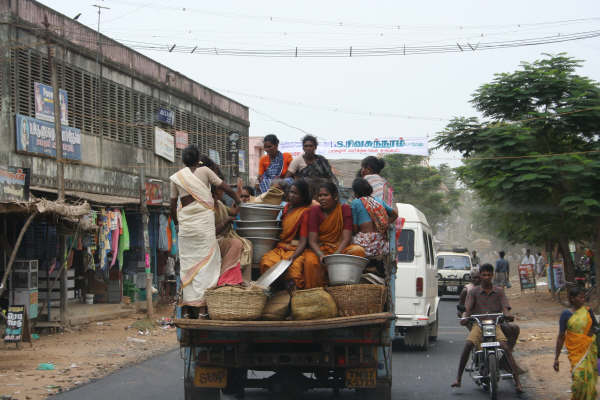Lavkasterne i Tranquebar: Museumsindsamling med særligt fokus på lavkaster og religiøse mindretals kultur, religion og daglige levevis
Forskningsleder Bente Wolf og forskningsassistent Caroline Lillelund, Etnografisk Samling, Nationalmuseet
- Projektet har plads på Galathea3 og er finansieret af Bikubenfonden
Da de danske handelsfolk og koloniembedsmænd kom til Tranquebar, mødte de et samfund med en kulturel, religiøs og økonomisk mangfoldighed, der langt overgik selv de mest sammensatte europæiske samfund. I Indien var stenrige fyrster med overdådige paladser, asketiske eremitpræster, slangetæmmere, fiskere, kurveflettere og isolerede ’primitive’ stammer organiseret i et system af utallige kaster og religiøse grupperinger med indbyrdes rettigheder og forpligtelser. Det indiske samfund på én gang både forundrede og fascinerede de nytilkomne danskere.
Skønt de luxuriøse fyrstehoffer er forsvundet, og Indien er overgået til en parlamentarisk demokratisk styreform, der giver lige rettigheder til alle uanset kaste og religion, er det den dag i dag et samfund præget af store økonomiske og kulturelle forskelle, der møder en, når man ankommer til Tranquebar. Ligesom i kolonitiden bor Tranquebars indbyggere overvejende i forskellige gader og kvarterer adskilt efter kaste og religion – og lavkasterne bor stadig, som det er sædvanligt i hele Sydindien, i separate landsbyer uden for selve byen.
Tranquebar Initiativets museale indsamlingsprojekt sætter særlig fokus på lavkasternes og de kristne og muslimske minoriteters nutidige kultur og levevis. De er alle grupper, hvis særegne traditioner og levevilkår ofte unddrager sig opmærksomhed i museumsudstillingers brede skildringer af indisk kultur, skønt de samlet set udgør mere end en tredjedel af den totale befolkning.
Lavkasterne i Trankebar er som i resten af Indien for størstedelens vedkommende umådelig fattige og besidder generelt kun meget få ejendele, og det er derfor en særlig udfordring at indsamle genstande, der afspejler disse kasters rige kultur og forestillingsverden. Fotografisk dokumentation af dagligliv og ritualer skal derfor supplere de fysisk indsamlede genstande for bedre at vise den tætte sammenhæng mellem kaste, beskæftigelse og kulturel tradition.

Foto: Ingrid Fihl Simonsen, aug. 2005